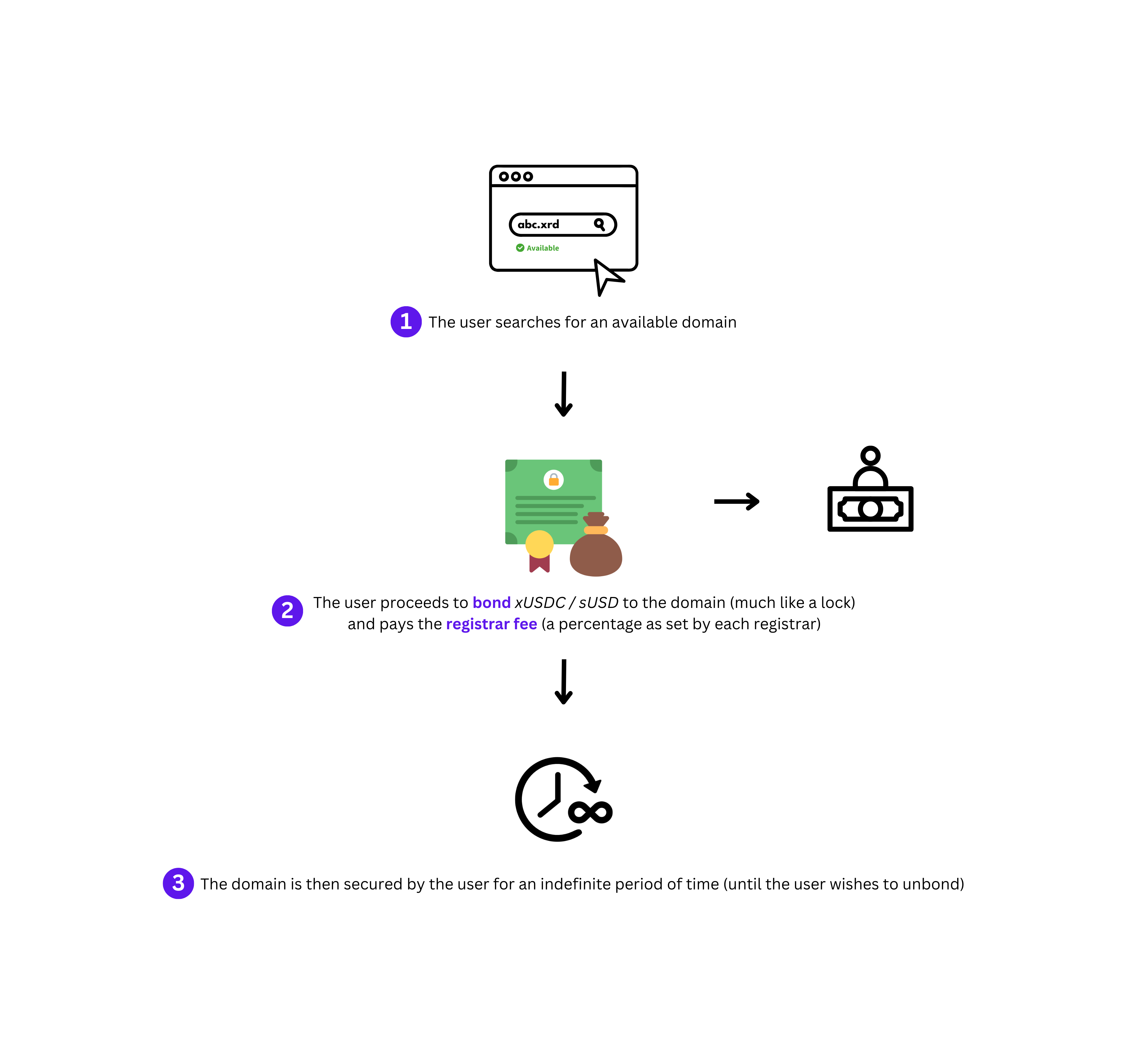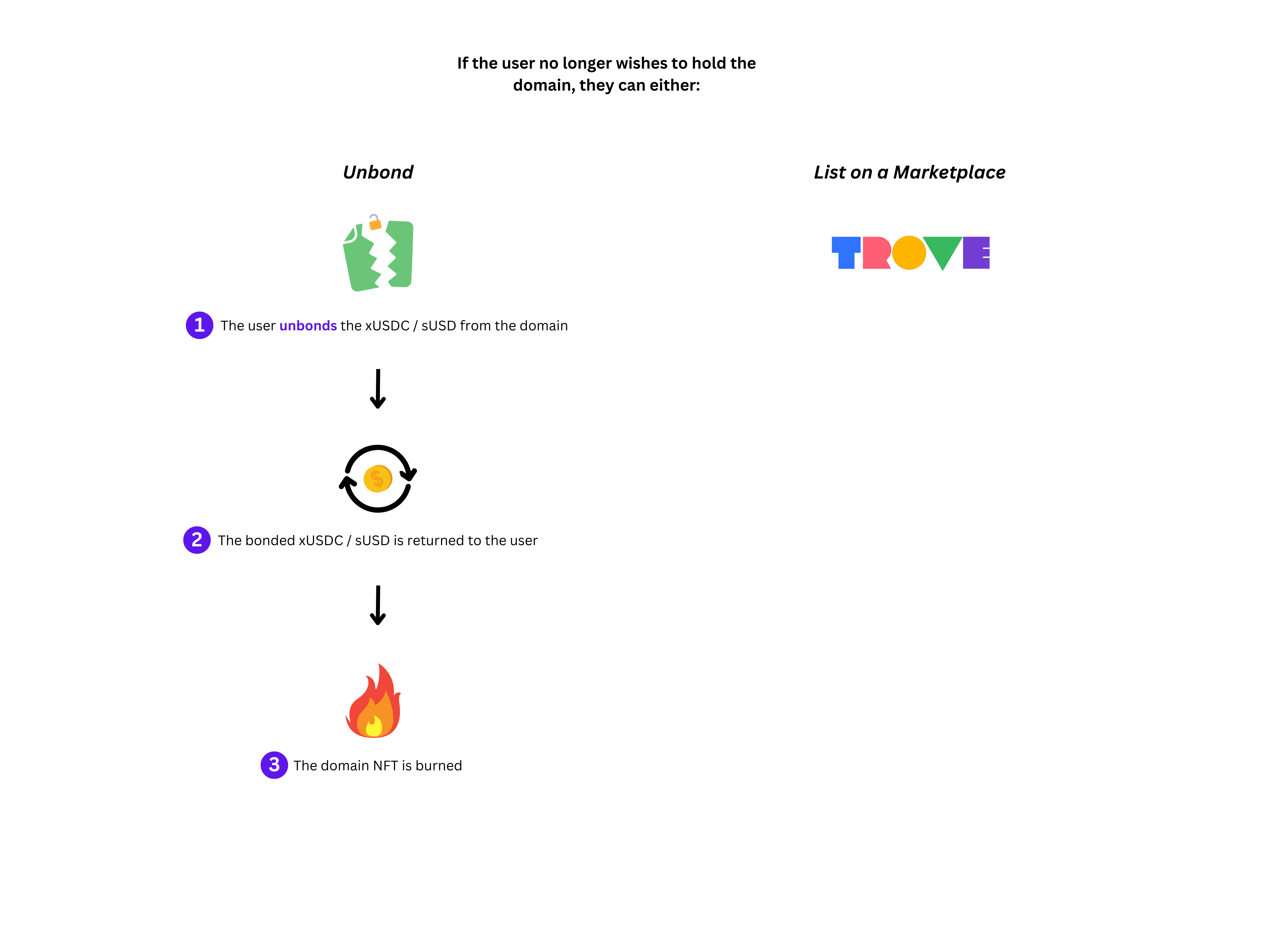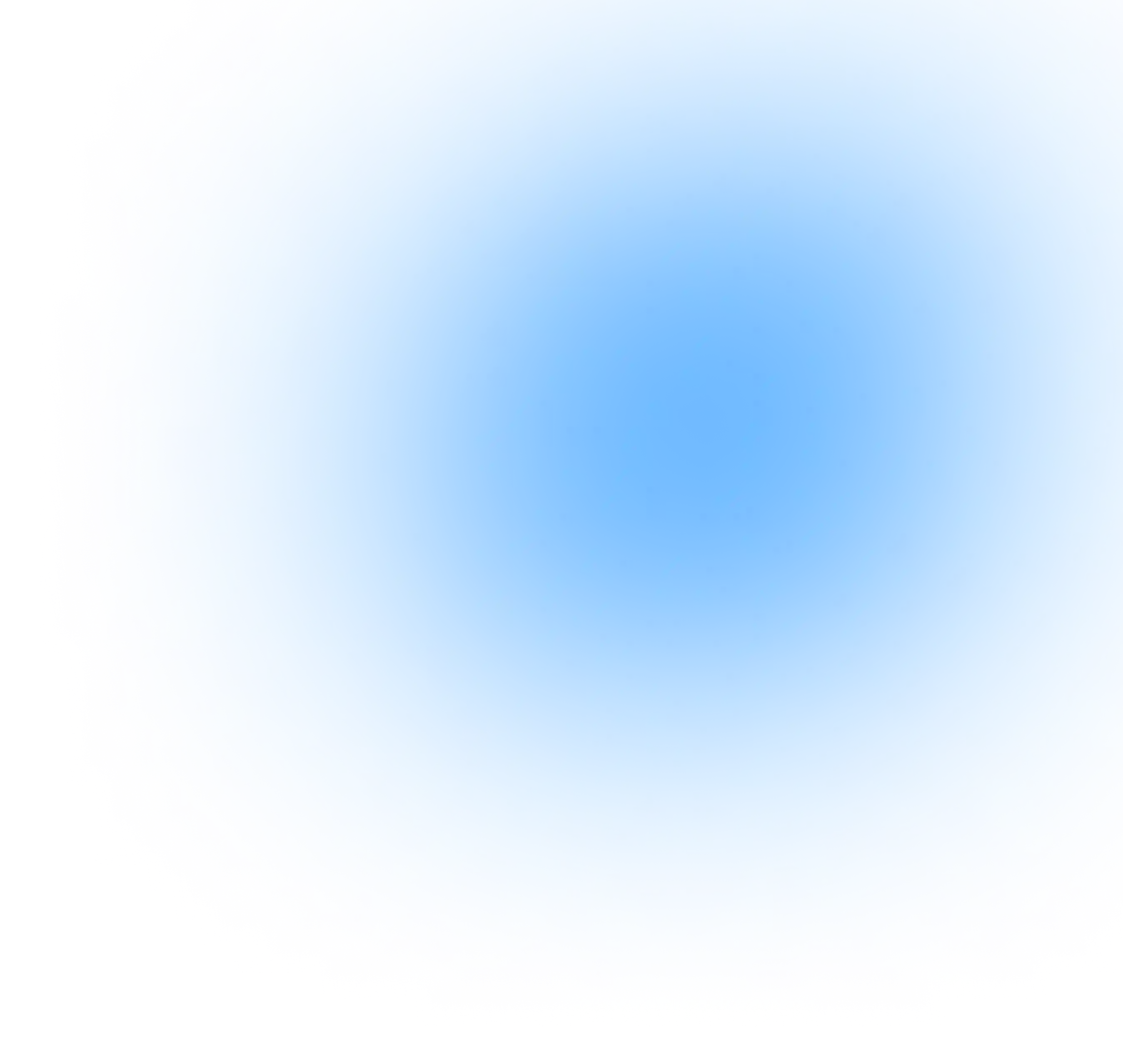Introduction
Recently we shared a governance proposal with the Radix community to help us decide on the future of the Radix Name Service. The proposal (see our blog here) lays out our plans to transition from a formal DAO to a fully open source project, and to move away from a revenue generating model to enable domains to be 'forever assets' with no renewals or expirations required (provided domains remain 'bonded').
The purpose of this blog is to provide a bit more detail on the proposed 'bonding' and 'unbonding' process, to provide domain holders with the information they need to make an informed decision on the governance vote. So firstly, let's begin with the bonding process...

Domain bonding flow
Bonding Domains
For a new user who wants to acquire a domain, the first step will be to search for an available domain. The Radix Name Service is designed to be completely open, allowing a myriad of registrars to provide user interfaces for the searching and purchasing of domains. Once the user has identified a domain they wish to acquire, they will be required to sign a transaction which bonds a small quantity of xUSDC or sUSD to the domain. This is a bit like staking, but instead of staking funds to a validator node, the user stakes the funds to a domain which essentially claims the domain for as long as the bond stays in place.
Bond values are proportional to the number of characters in a domain, and will follow the current base pricing:
- 2 characters = $240 (hi.xrd)
- 3 characters = $120 (hey.xrd)
- 4 characters = $40 (hola.xrd)
- 5+ characters = $4 (hello.xrd)
In addition to the bond, registrars will also be able to add an optional "registrar fee". This fee allows registrars to compete for users, by providing additional incentives etc.. and earn revenue for providing the interface to interact with the RNS components on ledger.
Provided a domain is bonded, it remains the property of the holder and cannot be recalled or expire. This essentially makes bonds free forever, as the bond can always be retrieved later by unbonding, as described in the following section.

Domain unbonding flow
Unbonding Domains
Let's assume a user no longer wishes to hold their domain, and wants to retrieve the xUSDC that was bonded initially. In this case, the user returns to any registrar and signs a transaction manifest to "unbond" the domain. In doing so, the bonded xUSDC or sUSD is immediately returned to the user and the domain NFT is burned. Should a new user now wish to purchase the same domain, they can do so, following the bonding flow described in the first section above.
An alternative means of disposing of a domain is to simply trade it on a Marketplace such as Trove. As the domain is bonded, it provides a floor price to consider when selling the domain (but we expect some domains may trade at a premium to their bond). Domains are always freely transferrable, with the RNS placing no restrictions on the movement of any domains.
FAQs
1. Will each domain need to be bonded individually?
Yes, each domain will require a bond (in the same way that each bond has a base price under the existing system). For users with many domains, it is expected that registrars may provide a way to batch manifest instructions to bond multiple domains (within the limits of the Radix Engine).
2. What about sub-domains, how are these affected?
Subdomains are not individual assets so the bond is only applicable to the root domain. If a domain has subdomains assigned and is unbonded, these subdomains along with any records will be destroyed once the domain is unbonded.
3. Will my existing domains be affected by these changes?
Yes, assuming the governance vote is passed, existing domains will need to be migrated. XRD Domains will provide a simple user interface that will prompt users to "upgrade" their domains. After the update (and successful bonding of any domains that wish to be retained), domains will appear in users' wallets exactly as they do now. XRD Domains will endeavour to batch transactions to facilitate users who have lots of domains, but there are some network limitations that might affect the number of domains that can be batched in one transaction.
4. What if the governance vote does not pass? What will happen to domains in this case?
Domains will continue to require annual renewals, but since we are no longer in a position to fund the RNS foundation ourselves, we will facilitate the forming of a new committee from the community who wishes to fund the operation of the DAO.
5. If I do nothing, what happens to my existing domains?
Fear not, existing domains will remain under your control and in your possession. However, if the vote is passed and we upgrade the Radix Name Service, existing domains will lose any functionality within the Radix Name Service until they are upgraded. All existing domain names will be taken out of circulation so they cannot be duplicated under the upgraded Radix Name Service.







